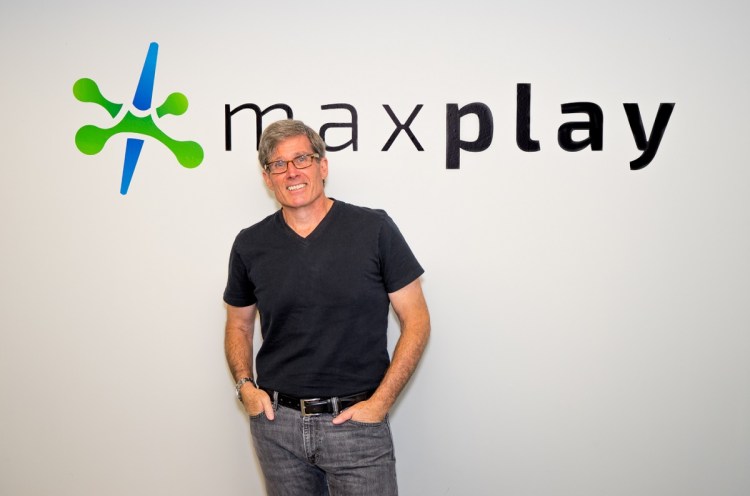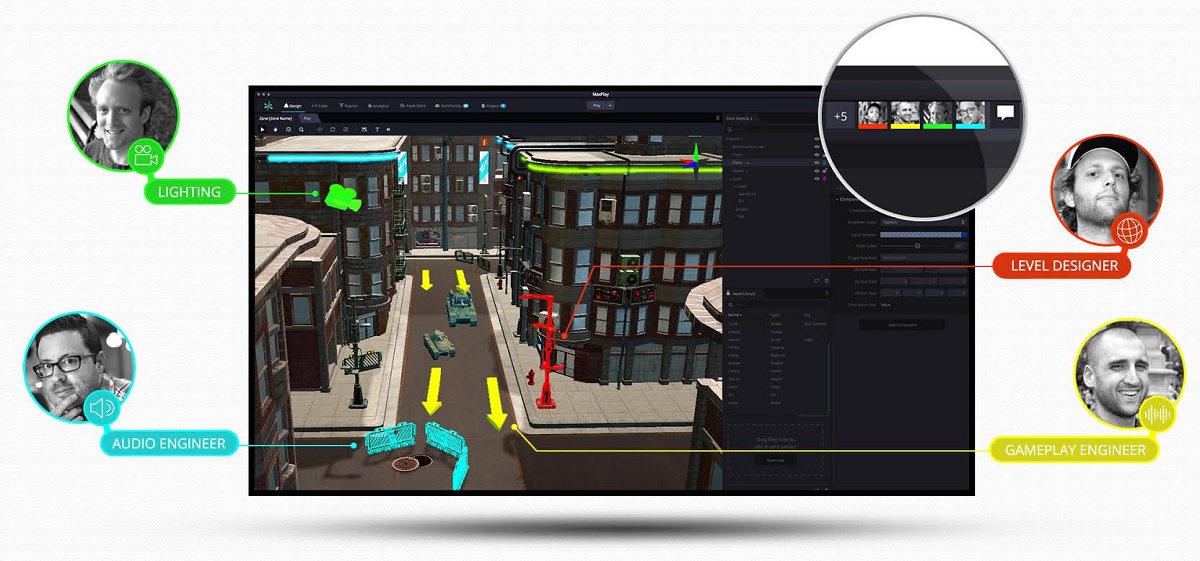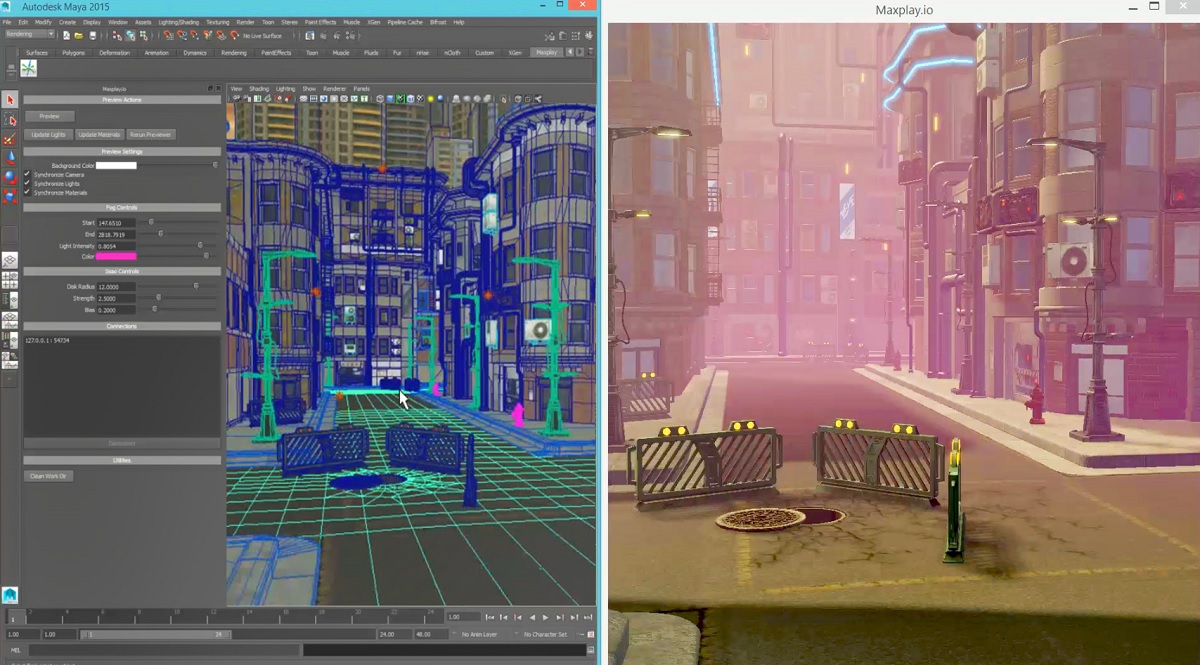Today’s most popular game engines from Unity Technologies and Epic Games (Unreal Engine) were built a while ago. And that’s why Sinjin Bain, the chief executive of MaxPlay, believes his new game engine can win over the hearts and minds of game developers.
San Francisco-based MaxPlay uses modern cloud technology and learnings from web-based enterprise software to bring the traditional stand-alone game engine up to speed. Game engines are vital to the whole ecosystem of games, as they enable developers to speed up the process of making games and iterate on prototypes. They allow designers to reuse technologies that have been invented before and make game development more accessible to a wider group of creators.
The startup spun out of Technicolor and it has raised $17 million to date, said Bain, in an interview with GamesBeat. I’m interviewing Bain on stage about the company today at the GamesBeat 2015 conference in San Francisco.
But Bain believes that game engines created more than a decade ago haven’t kept pace with change. His company is using scalable enterprise software technologies, allowing two or more game designers in different locations to work on the same file at the same time. I watched a demo of this working, where one developer manipulated the location of some rocks in a landscape and another played around with the speed of tanks moving through it. The changes they made appeared quickly, and were even pushed to a viewer on an iPad. That allows for distributed teams to work together more efficiently, Bain said.
“The work flows we see today were created in the 1980s,” Bain said.
Whatever its benefits, Maxplay faces stiff competition. Epic’s Unreal game engine works across a whole series of platforms, from mobile to the high-end PC, and Unity says that its game engine was used by 2 million people in the past month. The momentum behind those platforms — not counting others such as Cocos2D — is pretty intimidating.
But Bain said that gaming has evolved dramatically over the past 15 years with digital distribution, new business models, distributed development, and an explosion of hardware platforms that have dramatically changed game design and gameplay experiences. He says the platforms and processes used to create games have remained relatively static. Any changes have been “bolted on” to the sides of pre-existing platforms, he said.
MaxPlay was founded to define and engineer a new software platform to build and operate high-quality games in today’s increasingly complex, global, multi-platform environment.
“Bottomline, we need to help game developers find fun faster, and then be able to continuously optimize that fun for their users,” said Bain.
Starting two years ago, MaxPlay went about building a extensible service-oriented architecture that is built on an asset-driven database structure that fully leverages the cloud. That means that people from all parts of a game company — from artists to programmers — can work together simultaneously in the same project. The MaxPlay engine also takes advantage of whatever computing resources are available, whether it’s a single core, or computing brain, or many different ones. You can preview changes in third-party tools, such as the Maya content creation tool, in the runtime, so you can see instantaneously how changes to art might turn out.
Bain added, “Game development is a team sport, yet today’s devs are still working in a linear and siloed manner, which stifles productivity and dramatically inhibits collaboration and creativity.”
The tools use modern analytics that instrument the prototype so that developers can know exactly what is going on at any given time. In the landscape for a “tower defense” game that I viewed, it was easy to see from the analytics that the tanks were moving too fast and that they had to be slowed down so that the defenders had a chance to stop them. The developers fixed the problem on the fly, slowing the tanks using a multithreaded script editor. The developer made the change in Austin, Texas, where MaxPlay has an office, and they showed up live at the demo in San Francisco.
The whole point is to enable teams to iterate on content rapidly, so they can revise it over and over until they get it right. The company wants to fix bad work flows, enable easier platform choices, and let developers work anywhere they want, using different computing devices.
“We are focused on enabling real-time, cross-discipline collaboration so a team can build on each other’s skillsets which we know will unlock developer’s creativity,” said Bain. “We are taking what currently takes 10-20 minutes per iteration change into real-time — that’s thousands of man hours saved in each development cycle.”
MaxPlay’s team has worked on games that have generated $20 billion over the last decade.
“For 100 years Technicolor has empowered storytellers to bring their unique vision to life. We believe that games are another form of storytelling, and MaxPlay provides content creators with the best technology platform to take their craft to the next level,” said Vince Pizzica, senior executive vice president for corporate development and strategy at Technicolor, in a statement. “We share a common goal, which is to provide amazing user experiences through the application of new technologies.”
Chris Carvalho, MaxPlay Board member and former COO of Kabam added, “MaxPlay is a game-changing technology venture. Using modern innovative technologies both proprietary and existing, MaxPlay is the only SaaS enterprise game development solution with a database-driven cloud architecture. This radical shift away from traditional siloed game-development practices gives developers the opportunity to create and operate games more effectively and cost-efficiently than ever before.”
VentureBeat's mission is to be a digital town square for technical decision-makers to gain knowledge about transformative enterprise technology and transact. Learn More



